
Majestic Peaks of the Dolomites
Discover the awe-inspiring Dolomites, a UNESCO World Heritage site in Italy, offering breathtaking landscapes, outdoor adventures, and rich cultural experiences year-round.
The Dolomites, a UNESCO World Heritage site, are a stunning mountain range in northern Italy. Known for their dramatic peaks, lush valleys, and pristine alpine lakes, the Dolomites offer an unforgettable experience for nature lovers and adventure seekers alike. Whether you're an avid hiker, a mountain biker, or simply someone who enjoys breathtaking scenery, the Dolomites have something special for you. In summer, the Dolomites transform into a paradise for outdoor activities. Trails of varying difficulty levels wind through meadows filled with wildflowers and past historic mountain huts. These trails offer panoramic views that will leave you spellbound. The region is also famous for its Via Ferrata routes, which provide a unique way to experience the rugged beauty of the mountains while being safely secured to iron cables. Winter in the Dolomites is equally magical. The area becomes a top destination for skiing and snowboarding, with world-class slopes and facilities. Even if you're not a skier, you can enjoy the winter wonderland through snowshoeing, ice climbing, or simply cozying up in a charming alpine lodge. Beyond outdoor activities, the Dolomites boast rich cultural experiences. The region is dotted with picturesque villages that offer a glimpse into traditional Ladin culture. Savor local dishes like polenta, speck, and canederli, and don't forget to try the local wines. The hospitality of the locals, combined with the awe-inspiring landscape, makes the Dolomites a must-visit destination.
Local tips in Dolomites
- Visit in late spring or early autumn to avoid the crowds and enjoy mild weather.
- Consider staying in a rifugio, a mountain hut, for an authentic alpine experience.
- Make sure to try local Ladin cuisine, which is unique to this region.
- Use public transportation or rent a car to explore the many scenic routes and hidden gems.
- Learn a few basic phrases in Italian and German, as both languages are commonly spoken here.
Majestic Peaks of the Dolomites
The Dolomites, a UNESCO World Heritage site, are a stunning mountain range in northern Italy. Known for their dramatic peaks, lush valleys, and pristine alpine lakes, the Dolomites offer an unforgettable experience for nature lovers and adventure seekers alike. Whether you're an avid hiker, a mountain biker, or simply someone who enjoys breathtaking scenery, the Dolomites have something special for you. In summer, the Dolomites transform into a paradise for outdoor activities. Trails of varying difficulty levels wind through meadows filled with wildflowers and past historic mountain huts. These trails offer panoramic views that will leave you spellbound. The region is also famous for its Via Ferrata routes, which provide a unique way to experience the rugged beauty of the mountains while being safely secured to iron cables. Winter in the Dolomites is equally magical. The area becomes a top destination for skiing and snowboarding, with world-class slopes and facilities. Even if you're not a skier, you can enjoy the winter wonderland through snowshoeing, ice climbing, or simply cozying up in a charming alpine lodge. Beyond outdoor activities, the Dolomites boast rich cultural experiences. The region is dotted with picturesque villages that offer a glimpse into traditional Ladin culture. Savor local dishes like polenta, speck, and canederli, and don't forget to try the local wines. The hospitality of the locals, combined with the awe-inspiring landscape, makes the Dolomites a must-visit destination.
When is the best time to go to Dolomites?
Iconic landmarks you can’t miss
Terrazza delle Dolomiti
Discover the stunning vistas of the Dolomites at Terrazza delle Dolomiti, a mountain cable car attraction in Canazei, Italy.
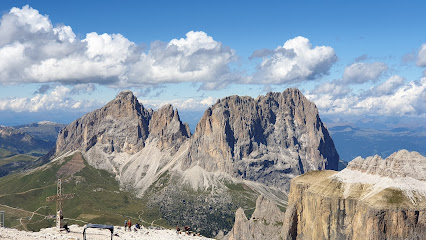
돌로미티(돌로마이트)
Discover the breathtaking hiking trails of Rocca Pietore, a hidden gem in the Dolomites, offering stunning landscapes and unforgettable outdoor adventures.
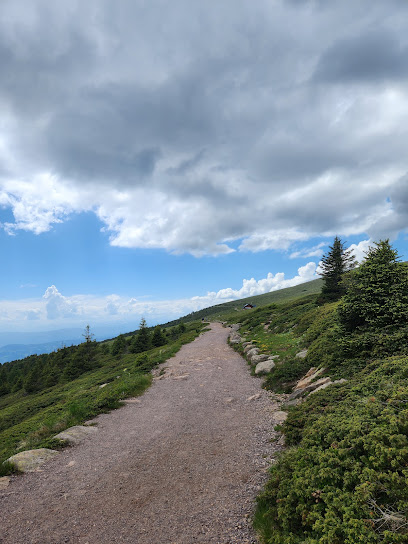
Unmissable attractions to see
Parco Naturale Tre Cime
Explore the stunning landscapes of Parco Naturale Tre Cime, a breathtaking natural park in the Dolomites, perfect for hiking and wildlife enthusiasts.
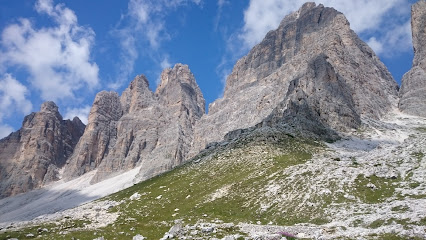
Parco Naturale Puez Odle
Discover the breathtaking beauty of Parco Naturale Puez Odle, a natural paradise in South Tyrol featuring stunning landscapes and rich biodiversity.
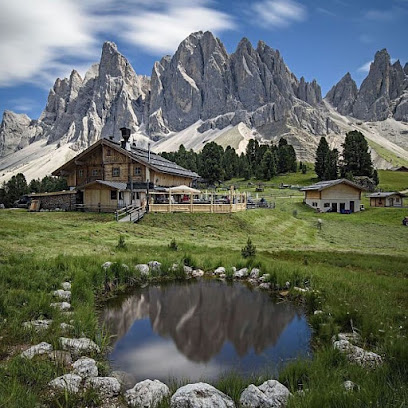
Terrazza delle Dolomiti
Experience breathtaking views and exhilarating adventures at Terrazza delle Dolomiti, the gateway to the stunning Dolomite mountains in Italy.

Passo Pordoi 2.239 m
Discover the stunning alpine beauty and adventure at Passo Pordoi, a breathtaking mountain pass in the Dolomites, Italy.
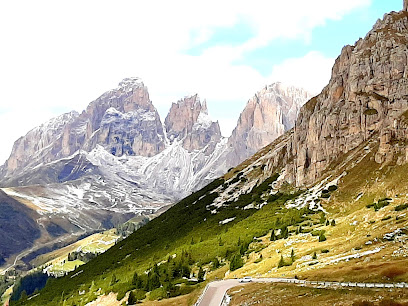
Duomo di Bolzano
Discover the Duomo di Bolzano, a Gothic masterpiece and spiritual heart of South Tyrol, where history and architecture intertwine beautifully.
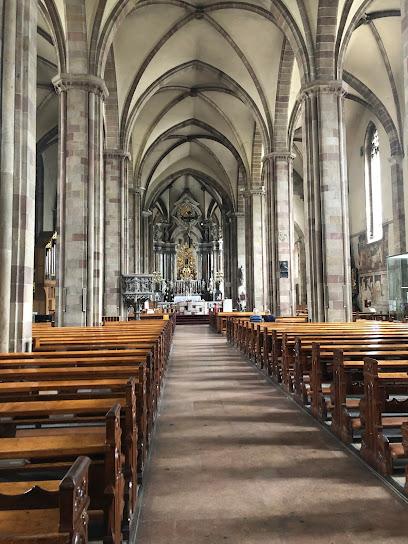
Brixner Dom
Explore the breathtaking Brixner Dom, a must-see Catholic cathedral in Brixen, South Tyrol, known for its stunning architecture and rich history.
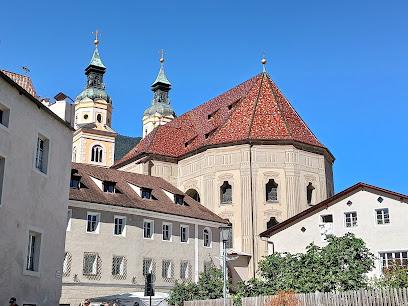
Ortisei - Val Gardena
Experience the breathtaking beauty and rich culture of Ortisei in Val Gardena, a paradise for outdoor enthusiasts and culture lovers alike.
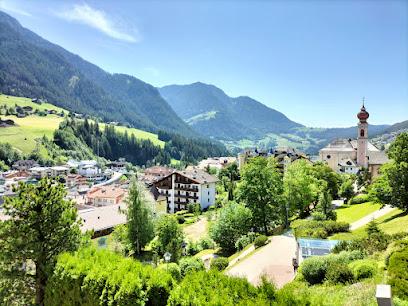
La Casera
Discover La Casera in Belluno: A perfect blend of authentic Italian cuisine and local charm amidst stunning Dolomite landscapes.
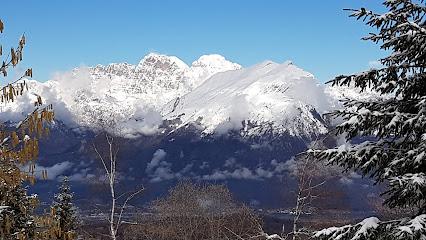
Castel Mareccio
Discover the historical charm of Castel Mareccio, a stunning castle in Bolzano surrounded by vineyards and breathtaking views, perfect for culture enthusiasts.
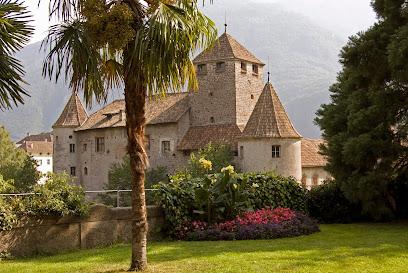
Tre Valli
Discover the enchanting Tre Valli ski resort in Italy’s Belluno, where exhilarating slopes meet breathtaking alpine beauty for an unforgettable winter getaway.
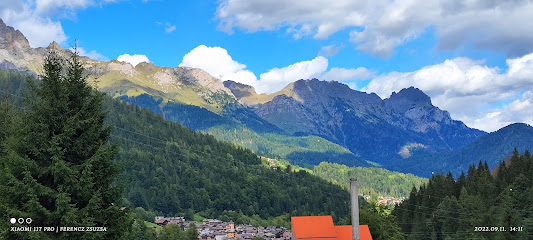
archaeological naturalistic spa area Lagole
Experience the beauty and history of Lagole, a unique archaeological spa area nestled in the breathtaking Dolomites of Italy.
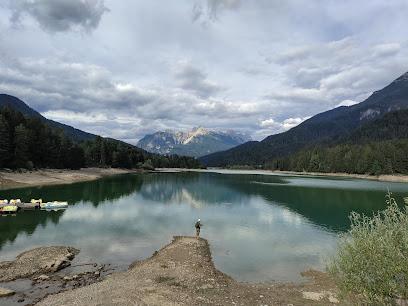
Val San Nicolò
Explore Val San Nicolò, a stunning alpine valley in Trentino, Italy, offering breathtaking hikes, serene landscapes, and an unforgettable natural experience.
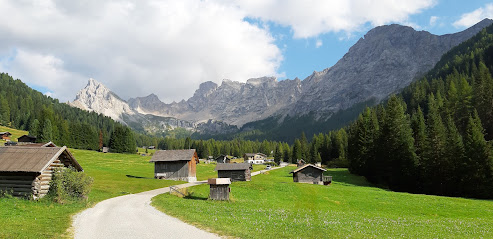
Fassa Valley
Explore the stunning Fassa Valley in the Dolomites, a picturesque destination offering adventure, culture, and breathtaking alpine beauty.
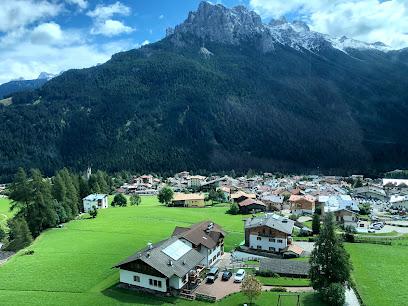
Chiostro di Bressanone
Explore the serene Chiostro di Bressanone, a historical landmark and open-air museum in the heart of Brixen, revealing South Tyrol's rich heritage and stunning art.

Val di Fassa
Discover the enchanting beauty of Val di Fassa, a year-round destination for outdoor adventures and cultural experiences in the heart of the Dolomites.
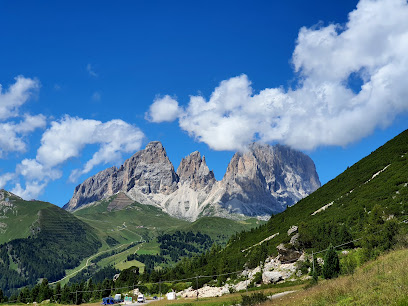
Essential places to dine
Rifugio Fuciade
Experience authentic Italian alpine cuisine at Rifugio Fuciade, surrounded by breathtaking views of the Dolomites.
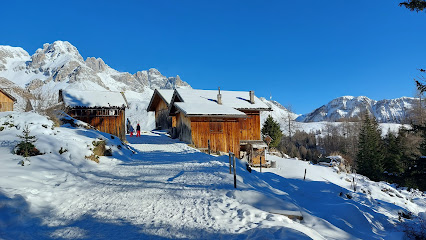
Osteria La Montanara
Discover authentic Italian cuisine at Osteria La Montanara in Canazei - where alpine charm meets delightful flavors.
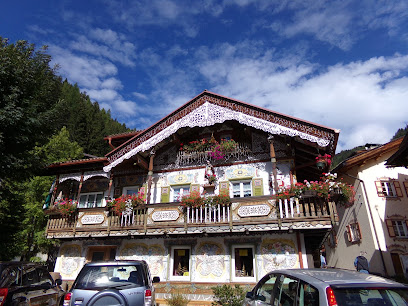
Rifugio Fodom
Experience authentic Italian cuisine amidst breathtaking alpine scenery at Rifugio Fodom in the stunning Dolomites.
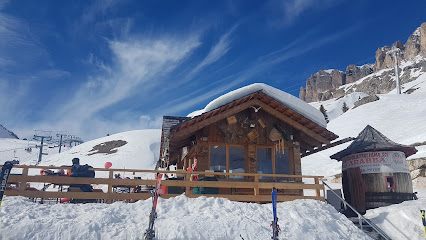
Col Alt
Experience authentic South Tyrolean cuisine at Col Alt while enjoying stunning views of Corvara's breathtaking landscapes.

Baita Gherdeccia
Discover Baita Gherdeccia: A delightful restaurant and pub offering authentic Italian cuisine amidst stunning Dolomite scenery.
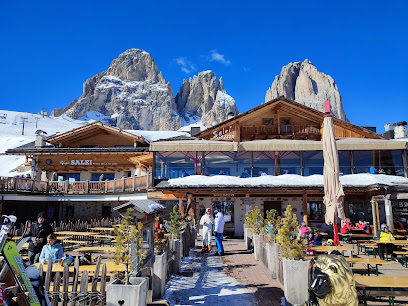
Dolomites Geyser Restaurant Apres Ski
Discover exquisite alpine dining at Dolomites Geyser Restaurant Apres Ski in San Giovanni di Fassa – where flavor meets breathtaking views.
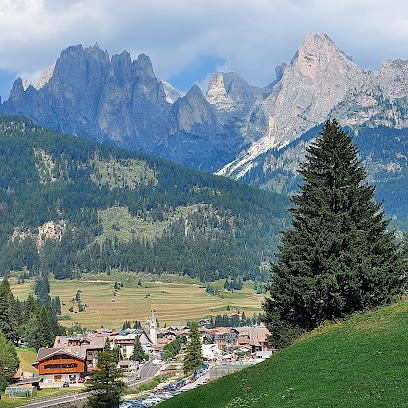
GIGIO PICOL Baita Ristorante
Discover authentic Italian flavors at GIGIO PICOL Baita Ristorante in scenic Falcade - where culinary excellence meets breathtaking views.
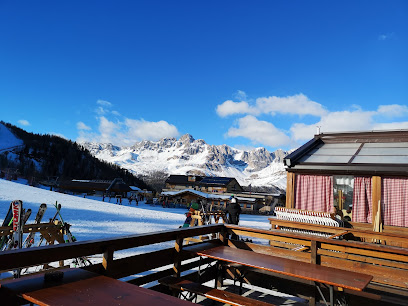
Albergo Ristorante Baita Dovich
Experience authentic Italian hospitality at Albergo Ristorante Baita Dovich - where stunning mountain views meet exquisite cuisine.

Baita Dies Bis
Discover authentic Italian flavors at Baita Dies Bis in Pie' Falcade – a must-visit restaurant for food lovers exploring the beautiful Province of Belluno.
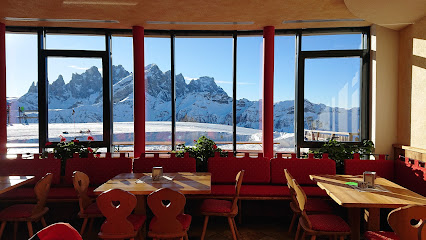
La Stua Dei Ladins
Discover authentic Italian flavors at La Stua Dei Ladins in Canazei – a culinary treasure in the heart of the Dolomites.
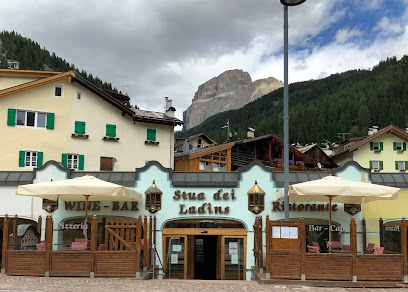
Col de Cuk
Experience authentic Italian pizza with breathtaking mountain views at Col de Cuk in Canazei's stunning Dolomites.
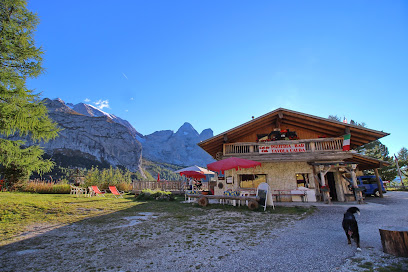
Ostaria DaSté
Experience authentic Trentino cuisine at Ostaria DaSté in Campitello di Fassa, where every meal is a celebration of local flavors amidst stunning mountain views.
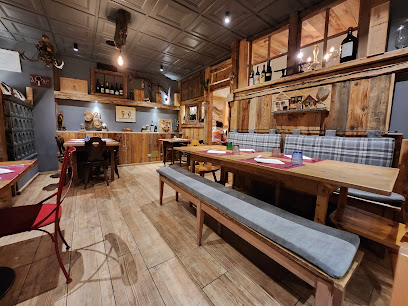
Ristorante Stella Alpina
Experience authentic Italian cuisine at Ristorante Stella Alpina in Piè Falcade, where delicious food meets stunning mountain views.

Baita sole
Experience authentic Italian cuisine amidst breathtaking alpine landscapes at Baita Sole in Malga Ciapela.
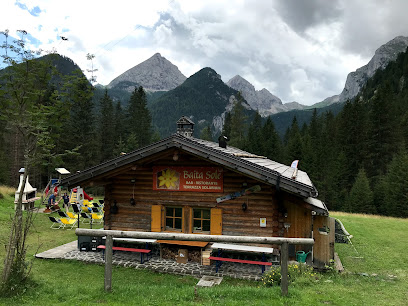
Baita Locia De Contrin
Experience authentic Italian cuisine with stunning views at Baita Locia De Contrin in Canazei - A must-visit culinary destination!
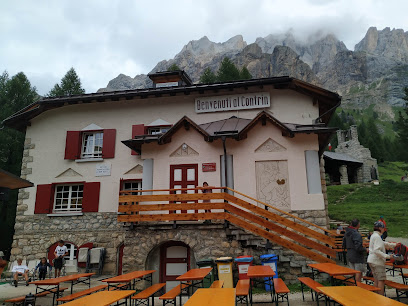
Markets, malls and hidden boutiques
Artiganz Nouva S.A.S. Di Ganz Davide & C
Discover authentic Italian crafts and unique souvenirs at Artiganz Nouva in Falcade, a treasure trove for tourists exploring the Italian Alps.
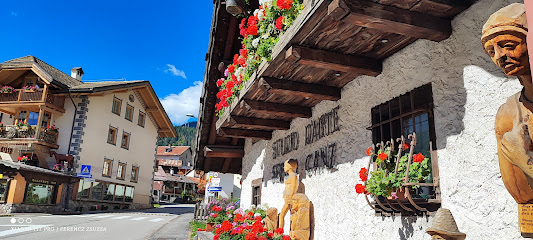
Detomas Shop
Explore the best of the Dolomites with quality gear from Detomas Shop in Canazei, your trusted sporting goods destination.
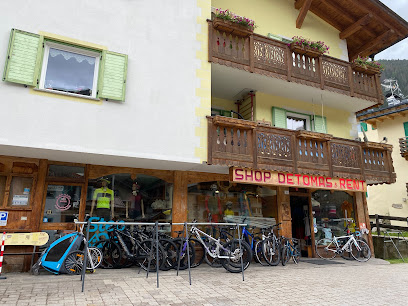
La Vecchia Bottega
Explore the rich culinary traditions of Canazei at La Vecchia Bottega, your destination for local delicacies and authentic flavors.
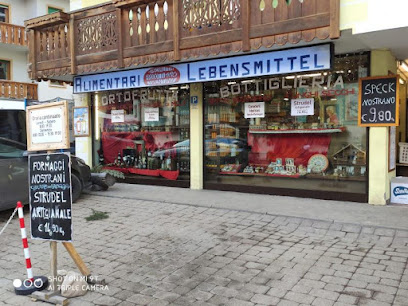
Holiday Sport
Discover stylish women's clothing and top-notch sporting goods at Holiday Sport in Falcade, a shopper's paradise amidst breathtaking mountain scenery.
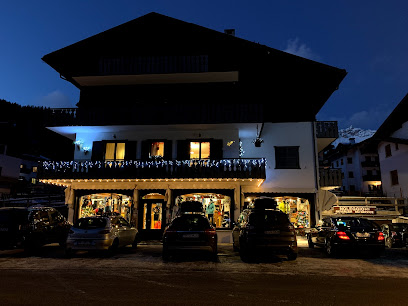
DOLOMITES GIFTS
Explore the enchanting Dolomites Gifts in Predazzo for unique souvenirs and local crafts that capture the charm of the Dolomites.
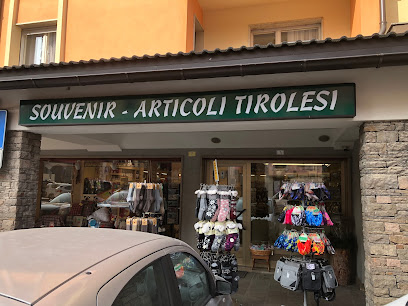
Souvenir El Gnomo
Explore the artistic treasures at Souvenir El Gnomo in Caprile, where every handcrafted item tells a story of Italian culture and craftsmanship.
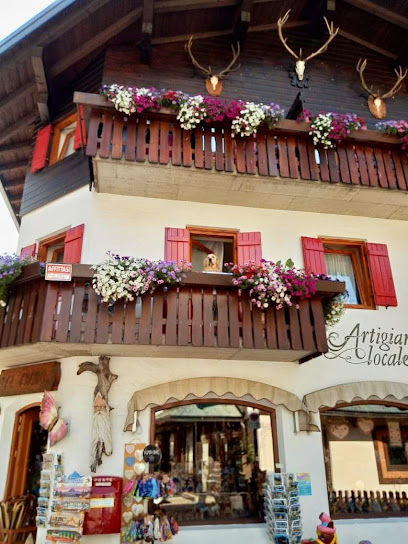
Dolomiti Gioielli
Explore Dolomiti Gioielli, where exquisite handcrafted jewelry meets the breathtaking beauty of the Dolomite mountains in Canazei.
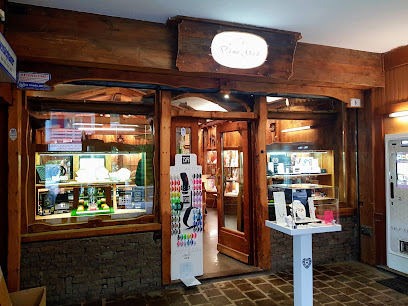
La Casa Del Cucù - Prodotti Tipici Formaggi di Montagna
Discover authentic Dolomite flavors at La Casa Del Cucù, your gourmet grocery store for local cheeses, wines, and cured meats in Canazei.
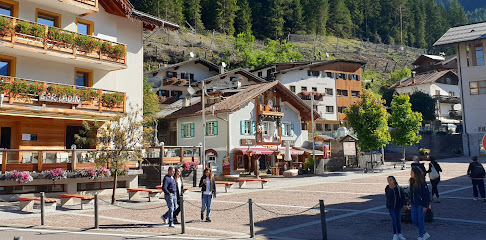
United Colors of Benetton
Explore the vibrant styles of United Colors of Benetton in Canazei - where fashion meets the stunning beauty of the Dolomites.

La Boutique
Explore unique fashion at La Boutique in Moena, a charming clothing store that embodies the essence of local Italian style amidst stunning alpine scenery.
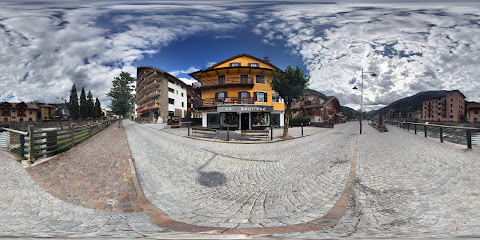
De Grandi Sport Marmolada
Your one-stop shop for outdoor adventures in the stunning Dolomites at De Grandi Sport Marmolada, where quality meets adventure.

Artigianato & Sport
Explore the Dolomites with top-notch gear from Artigianato & Sport, your go-to sporting goods store in Pozza di Fassa.

Homeart (S.A.S.-K.G.)
Explore Homeart in Corvara In Badia for unique gifts and souvenirs capturing the essence of South Tyrol's beauty and craftsmanship.
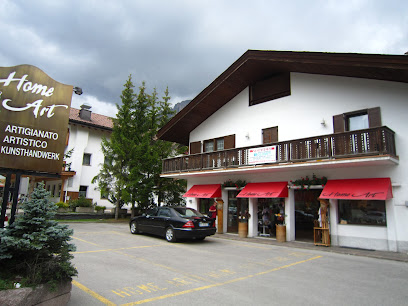
Pordoi Souvenirs (S.N.C.)
Discover unique gifts and local crafts at Pordoi Souvenirs in the breathtaking Dolomites, perfect for capturing your alpine adventure.
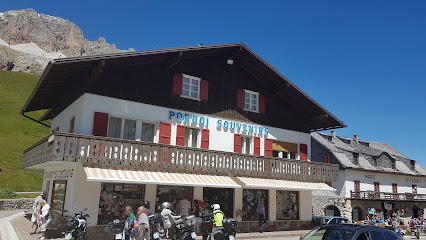
Dolomiten Sportswear S.R.L.
Gear up for unforgettable adventures in the Dolomites at Dolomiten Sportswear, your ultimate sporting goods destination in Canazei.
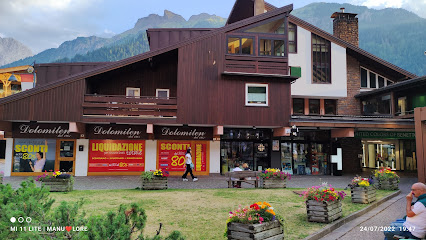
Essential bars & hidden hideouts
Terrazza-Bar L'Aivaz
Experience the charm of Terrazza-Bar L'Aivaz in Falcade, where stunning mountain views meet delightful refreshments in a cozy atmosphere.
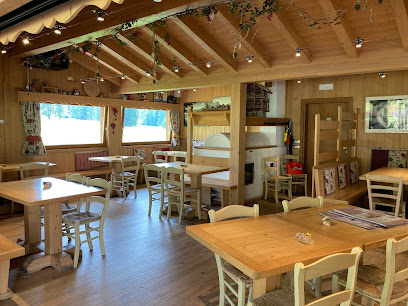
Dolomites Geyser Restaurant Apres Ski
Experience unforgettable dining at Dolomites Geyser Restaurant Apres Ski, where local flavors and stunning mountain views come together.
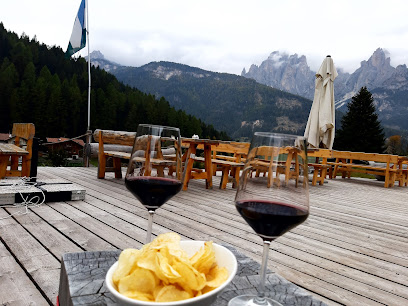
El Festil
Experience the charm of El Festil in Piè Falcade, where delicious refreshments meet breathtaking alpine views.
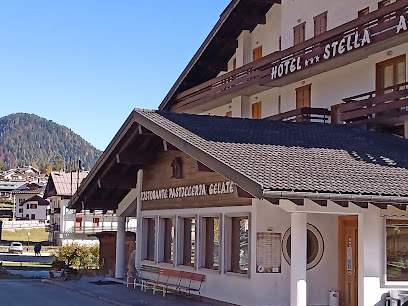
Pub Bar Na Bela Vida Après Ski Campitello di Fassa / Val di Fassa
Discover the lively atmosphere of Pub Bar Na Bela Vida in Campitello di Fassa, the ultimate après-ski destination for music and fun.
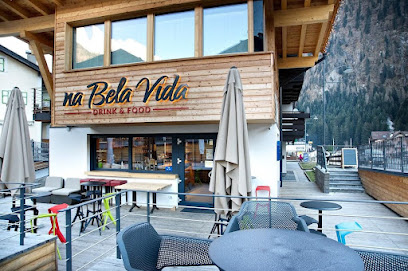
Bar Diga Souvenirs - Fedaia (tn)
Experience the charm of Bar Diga Souvenirs - a cozy bar by Lago Fedaia offering local delights and unique souvenirs amidst breathtaking Dolomite scenery.
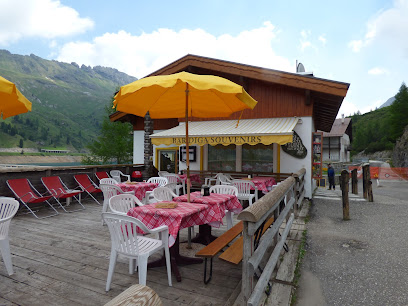
Pian de Frataces
Discover delicious local cuisine and a cozy atmosphere at Pian de Frataces, a premier gastropub nestled in the stunning Dolomites.
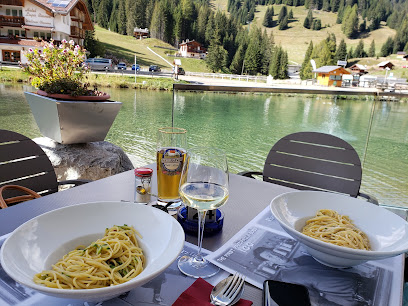
The Sora 50.12
Experience exquisite dining at The Sora 50.12 in Canazei, offering delicious tapas and small plates amidst the stunning Dolomite mountains.
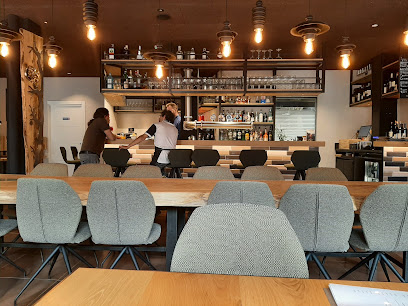
Spilleria al Pandèmia 19
Experience the warmth and charm of Spilleria al Pandèmia, a beloved pub in Canazei, where local flavors meet a vibrant atmosphere.
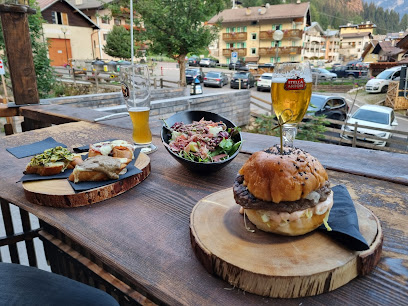
BAR COOP
Experience the warmth of Italian hospitality at Bar Coop in Caviola, where every sip tells a story amidst stunning mountain views.

Tirol
Discover the warmth and hospitality of Tirol, a charming bar in Campitello di Fassa, where local flavor meets stunning mountain views.
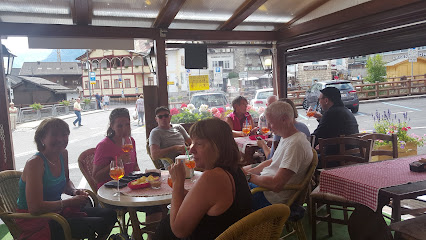
Birreria Music Pub La Stube
Discover a lively bar in Livinallongo del Col di Lana, offering delicious sandwiches, local craft beers, and vibrant live music in a cozy atmosphere.
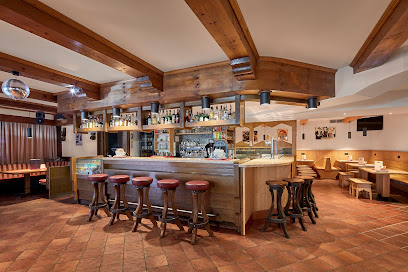
Bar Paninoteca al MUTILATO
Discover the cozy charm of Bar Paninoteca al MUTILATO in Piè Falcade, offering delicious panini and a welcoming atmosphere for all visitors.
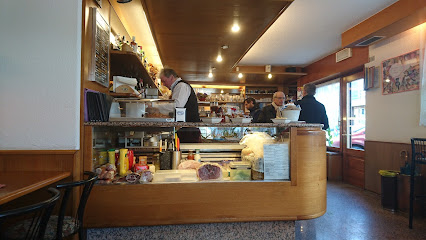
Rosengarden
Experience the vibrant nightlife at Rosengarden, a charming bar nestled in the stunning Dolomites of Canazei, offering delicious drinks and a warm atmosphere.
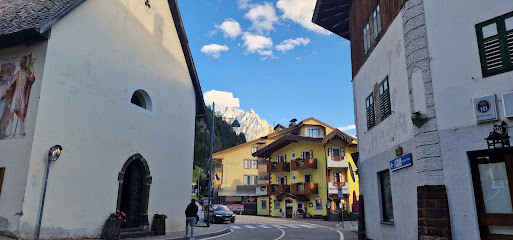
GaDi apres ski
Experience the heart of Canazei's après-ski culture at GaDi apres ski, where cozy vibes and delightful drinks await you after a day on the slopes.
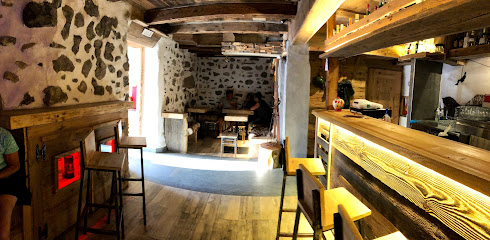
Wine Bar Oma
Discover the rich flavors of the Dolomites at Wine Bar Oma, where exquisite local wines and a cozy atmosphere await.
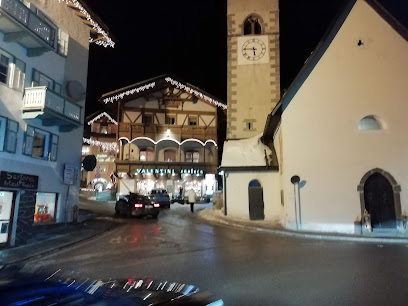
Local Phrases about Dolomites
-
- HelloCiao
[chow] - GoodbyeArrivederci
[ah-ree-veh-dehr-chee] - YesSì
[see] - NoNo
[noh] - Please/You're welcomePer favore/Prego
[pehr fah-voh-reh/preh-goh] - Thank youGrazie
[grah-tsyeh] - Excuse me/SorryMi scusi/Scusa
[mee skoo-zee/skoo-sah] - How are you?Come stai?
[koh-meh stah-ee] - Fine. And you?Bene. E tu?
[beh-neh. eh too?] - Do you speak English?Parli inglese?
[pahr-lee een-gleh-zeh] - I don't understandNon capisco
[nohn kah-pee-skoh]
- HelloCiao
-
- I'd like to see the menu, pleaseVorrei vedere il menu, per favore
[vohr-ray veh-deh-reh eel meh-noo, pehr fah-voh-reh] - I don't eat meatNon mangio carne
[nohn mahn-joh kahr-neh] - Cheers!Salute!
[sah-loo-teh] - I would like to pay, pleaseVorrei pagare, per favore
[vohr-ray pah-gah-reh, pehr fah-voh-reh]
- I'd like to see the menu, pleaseVorrei vedere il menu, per favore
-
- Help!Aiuto!
[ah-yoo-toh] - Go away!Vai via!
[vah-ee vyah] - Call the Police!Chiamate la polizia!
[kyah-mah-teh lah poh-lee-tsyah] - Call a doctor!Chiamate un medico!
[kyah-mah-teh oon meh-dee-koh] - I'm lostMi sono perso/a
[mee soh-noh pehr-soh/ah] - I'm illSto male
[stoh mah-leh]
- Help!Aiuto!
-
- I'd like to buy...Vorrei comprare...
[vohr-ray kohm-prah-reh] - I'm just lookingSto solo guardando
[stoh soh-loh gwar-dahn-doh] - How much is it?Quanto costa?
[kwahn-toh koh-stah] - That's too expensiveÈ troppo caro
[eh troh-poh kah-roh] - Can you lower the price?Può abbassare il prezzo?
[pwoh ahb-bah-sah-reh eel preh-tsoh]
- I'd like to buy...Vorrei comprare...
-
- What time is it?Che ora è?
[keh oh-rah eh] - It's one o'clockÈ l'una
[eh loo-nah] - Half past (10)Sono le dieci e mezza
[soh-noh leh dyeh-chee eh meh-tzah] - MorningMattina
[maht-tee-nah] - AfternoonPomeriggio
[poh-meh-ree-joh] - EveningSera
[seh-rah] - YesterdayIeri
[yeh-ree] - TodayOggi
[oh-jee] - TomorrowDomani
[doh-mah-nee] - 1Uno
[oo-noh] - 2Due
[doo-eh] - 3Tre
[treh] - 4Quattro
[kwah-troh] - 5Cinque
[cheen-kweh] - 6Sei
[say] - 7Sette
[seht-teh] - 8Otto
[oh-toh] - 9Nove
[noh-veh] - 10Dieci
[dyeh-chee]
- What time is it?Che ora è?
-
- Where's a/the...?Dov'è...?
[doh-veh] - What's the address?Qual è l'indirizzo?
[kwahl eh leen-dee-ree-tsoh] - Can you show me (on the map)?Può mostrarmi (sulla mappa)?
[pwoh mohs-trar-mee (sool-lah mahp-pah)] - When's the next (bus)?Quando passa il prossimo (autobus)?
[kwahn-doh pahs-sah eel prohs-see-moh (ow-toh-boo-s)] - A ticket (to ....)Un biglietto (per ....)
[oon beel-lyeh-toh (pehr)]
- Where's a/the...?Dov'è...?
History of Dolomites
-
The Dolomites, also known as the 'Pale Mountains,' are named after the carbonate rock dolomite. They originated over 250 million years ago during the Triassic Period. The region was once covered by a vast tropical sea, and over time, mineral deposits from marine organisms formed the unique rock formations we see today.
-
The Dolomites are home to the Ladin people, an ethnic group with a distinct language and culture. The Ladins have lived in the region for over a thousand years, with their language, Ladin, being a Romance language derived from Vulgar Latin. Their traditions, festivals, and crafts are integral to the cultural fabric of the Dolomites.
-
The Romans extended their influence into the Dolomites around 15 BC. They constructed roads and infrastructure, facilitating trade and military movements. The Roman legacy is still visible in archaeological sites and ancient roads that crisscross the region.
-
During the Middle Ages, the Dolomites were dotted with fortresses and castles built by local lords and bishops. These structures served as defensive strongholds and symbols of power. Notable examples include the Castello di Andraz and Castello di Tures, which offer a glimpse into the feudal history of the region.
-
The Dolomites were a significant battleground during World War I, particularly in the conflict between Italy and Austria-Hungary. The rugged terrain saw the construction of tunnels, trenches, and fortifications. The open-air museums and preserved sites, such as the Lagazuoi Tunnels, provide a haunting reminder of the war's impact on the region.
-
In 2009, the Dolomites were designated a UNESCO World Heritage Site in recognition of their unique geological beauty and historical significance. This status has helped to preserve the natural environment and promote sustainable tourism, ensuring that the Dolomites remain a pristine destination for future generations.
Dolomites Essentials
-
The Dolomites are located in northeastern Italy and can be accessed via several major airports, including Venice Marco Polo Airport (VCE), Verona Villafranca Airport (VRN), and Innsbruck Airport (INN) in Austria. From these airports, you can rent a car or take a combination of trains and buses to reach the Dolomites. The region is well-connected by the Italian railway system, with major train stations in Bolzano, Trento, and Belluno. From these hubs, local buses and shuttle services can take you to your specific destination in the Dolomites.
-
Once in the Dolomites, you have several transportation options. Renting a car is highly recommended for flexibility, especially if you plan to explore multiple towns and hiking trails. Public buses operate between major towns and popular tourist sites, but schedules may be limited, especially in the off-season. Cable cars and funiculars are common for accessing high-altitude areas. Cycling is also a popular mode of transport, with numerous bike rental shops and well-marked bike paths.
-
The official currency in Italy is the Euro (EUR). Credit and debit cards are widely accepted in most hotels, restaurants, and shops. However, it is advisable to carry some cash, especially when visiting smaller towns or rural areas where card payment may not be available. ATMs are readily accessible in larger towns and tourist hubs.
-
The Dolomites are generally a very safe destination for tourists. Crime rates targeting tourists are extremely low, but it's always wise to take standard precautions such as securing your belongings and avoiding isolated areas at night. Emergency numbers in Italy include 112 for general emergencies and 118 for medical emergencies. It's advisable to have travel insurance that covers health and accident risks, especially if you plan to engage in outdoor activities like hiking or skiing.
-
In case of an emergency, dial 112 for general emergency services or 118 for medical emergencies. Major towns in the Dolomites have medical facilities and pharmacies. It is recommended to carry a basic first-aid kit, especially if you are hiking or participating in other outdoor activities. For minor health issues, pharmacies ('Farmacia') can provide over-the-counter medications.
-
Fashion: Do wear comfortable and appropriate clothing for outdoor activities. Avoid overly casual attire when dining in finer restaurants. Religion: Do respect local religious customs, particularly when visiting churches; modest clothing is advisable. Public Transport: Do validate your ticket before boarding trains and buses. Don't eat or drink on public transport. Greetings: Do greet people with 'Buongiorno' (Good morning) or 'Buona sera' (Good evening). A handshake is a common form of greeting. Eating & Drinking: Do try local dishes like polenta, speck, and canederli. Don't rush meals; savoring your food is part of the local culture.
-
To experience the Dolomites like a local, consider visiting during the shoulder seasons (late spring and early autumn) for fewer crowds and more authentic interactions with locals. Participate in local festivals and events to get a taste of regional culture. Visit the local markets to buy fresh produce and artisanal products. Engage with locals, many of whom speak German in addition to Italian, especially in the South Tyrol region.
Nearby Cities to Dolomites
-
Things To Do in Venice
-
Things To Do in Kitzbühel
-
Things To Do in Zell am See
-
Things To Do in Bad Gastein
-
Things To Do in Verona
-
Things To Do in St. Anton am Arlberg
-
Things To Do in Nova Gorica
-
Things To Do in Kranjska Gora
-
Things To Do in St. Moritz
-
Things To Do in Davos
-
Things To Do in Bohinj
-
Things To Do in Piran
-
Things To Do in Portorož
-
Things To Do in Arosa
-
Things To Do in Izola













